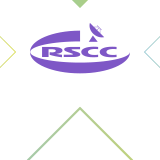Michael Collins
1930 - 2021
Gemini and Apollo astronaut
Michael Collins, our beloved father and
grandfather, died on Wednesday, April 28, 2021,
after a valiant battle with cancer. He was 90.
This day also marked the 64th wedding
anniversary between Mike and his late wife,
Patricia Finnegan Collins.
Please join us in fondly
and joyfully remembering his sharp wit, his
quiet sense of purpose and his wise perspective,
gained both from looking back at Earth from the
vantage of space and gazing across calm waters
from the deck of his fishing boat.
As the command module pilot
on NASA's Apollo 11 mission, Mike circled the
moon while Neil Armstrong and Buzz Aldrin
touched down at Tranquility Base on July 20,
1969. When his two crewmates returned from the
surface, he was in the unique position to
capture a photo of all of humanity — his fellow
astronauts on board the lunar module and
everyone else on Earth off in the distance.
“Today the nation lost a
true pioneer and lifelong advocate for
exploration in astronaut Michael Collins,”
acting NASA administrator Steve Jurczyk said in
a statement. “As pilot of the Apollo 11 command
module – some called him ‘the loneliest man in
history’ – while his colleagues walked on the
moon for the first time, he helped our nation
achieve a defining milestone.”
Path to the moon
A member of NASA's third
group of astronauts selected in 1963, Mike’s
path to joining the first moon landing began
with a three-day flight in Earth orbit. Assigned
as the pilot aboard Gemini 10, he launched with
John Young in July 1966 on a mission that
demonstrated rendezvous and docking with two
rocket stages.
Mike performed two
spacewalks on Gemini 10, becoming only the
fourth person to exit a spacecraft to work in
the vacuum of space and the first to conduct two
on the same mission.
On his second
extravehicular activity (EVA), he became the
first astronaut to transfer to another vehicle,
retrieving a cosmic dust collector from the
exterior of an earlier launched Agena target
stage.
After Gemini 10, Mike was
assigned to what was slated to be a test of the
complete Apollo spacecraft in Earth orbit (that
flight, Apollo 8, later was changed to be the
first mission to send humans into orbit around
the moon). In the course of his training,
though, he developed problems with his legs and
ultimately required surgery to correct for a
cervical disc herniation.
Given the time needed for
his recovery, he was removed from the crew and
reassigned to Apollo 11.
Though he later pondered if
Apollo 8 might someday be seen as the more
historic mission ("As you look back 100 years
from now, which is more important, the idea that
people left their home planet or the idea that
people arrived at their nearby satellite?"),
Mike was very happy to be part of the Apollo 11
crew — even if he was not one of the
moonwalkers.
"It's one of the questions
I get asked a million times, 'God, you got so
close to the moon and you didn't land. Doesn't
that really bug you?' It really does not," he
said.
"I honestly felt really
privileged to be on Apollo 11, to have one of
those three seats. I mean, there were guys in
the astronaut office who would have cut my
throat ear to ear to have one of those three
seats. I was very pleased to have one of those
three," he said. "Did I have the best of the
three? No. But was I pleased with the one I had?
Yes! And I have no feelings of frustration or
rancor or whatever. I'm very, very happy about
the whole thing."
Having decided before
Apollo 11 lifted off that it would be his last
mission, Mike splashed down from the moon having
accumulated a total of 11 days, 2 hours and 4
minutes in space over the course of his two
flights.
Around the world
Mike was born on Oct. 30,
1930, in Rome, Italy, where his father, a career
U.S. Army officer, was stationed. After moves
from Oklahoma to New York to Maryland to Ohio to
Puerto Rico to Texas to Virginia, he attended
St. Albans preparatory school in Washington,
D.C. He then received an appointment to the U.S.
Military Academy at West Point, New York, where
Mike earned his Bachelor of Science in 1952.
Enlisting in the Air Force,
Mike was trained on and flew F-86 fighter jets
out of Nellis Air Force Base in Nevada and
George Air Force Base in California, before
being assigned overseas to the
Chambley-Bussières Air Base in France and to
West Germany during the 1956 Hungarian
Revolution. He returned to the U.S. the
following year, where he attended an aircraft
maintenance officer course and then commanded a
mobile training detachment, traveling to air
bases around the world.
In 1960, Mike reported to
the Air Force Experimental Flight Test Pilot
School (later Aerospace Research Pilot School)
at Edwards Air Force Base in California. He
applied for NASA's second class of astronauts
but was not selected.
Instead, in 1962, he took a
postgraduate course on the basics of
spaceflight, which included flying F-104
supersonic jets to 90,000 feet (27,000 m) and
training in weightlessness on parabolic flights.
He graduated and returned to fighter operations
at Randolph Air Force Base in Texas when he was
accepted with the third group of NASA
astronauts.
Prior to flying on Gemini
10, Mike's first assignment was to specialize in
the development of the program's spacesuits. He
then served as backup pilot for the Gemini 7
mission.
Prior to the 1967 Apollo 1
fire, which claimed three astronauts' lives, he
was training for the then-planned second crewed
flight of the Apollo program. In the wake of the
tragedy, the mission was canceled.
Although he did not fly on
Apollo 8 due to needing surgery, Mike still
played an important role on the 1968 mission,
serving as CapCom, or capsule communicator, from
inside Mission Control in Houston. It was Mike
who informed the crew that they were good to
break the bonds of Earth’s gravity and set
course for the moon with the words “Apollo 8,
you are go for TLI!” (TLI stood for trans-lunar
injection).
After Apollo 11 and
spending 21 days in quarantine to protect
against any possible "moon germs," riding in
ticker tape parades in New York and Chicago,
attending a state dinner, addressing a joint
meeting of Congress and touring 22 countries in
38 days, Mike resigned from NASA in January
1970.
After the moon Recruited by
the Nixon Administration, Mike accepted a
position as Assistant Secretary of State for
Public Affairs, but found he did not enjoy the
job and left after a year to become the first
director of the Smithsonian Institution's
National Air and Space Museum.
Mike advocated for its
funding and oversaw the museum being built once
its budget was approved by Congress. He presided
over the museum's opening on July 1, 1976, when
his Apollo 11 command module, Columbia, and many
of his own personal effects flown on the mission
went on public display.
Mike headed the National
Air and Space Museum until 1978, when he became
undersecretary of the Smithsonian. He completed
Harvard Business School's advanced management
program in 1974 and took a position as vice
president of LTV Aerospace, a NASA contractor,
in 1980.
In 1982, Mike retired from
the Air Force with the rank of Major General. In
1985, he left LTV to found his own consulting
firm.
In addition to "Carrying
the Fire," he authored "Flying to the Moon and
Other Strange Places" (Farrar, Straus and
Giroux, 1976), "Liftoff! The Story of America's
Adventure in Space" (Grove Press, 1988) and
"Mission To Mars: An Astronaut's Vision Of Our
Future" (Grove Weidenfeld, 1990).
For his service to the
space program, Mike was honored with many
awards, including the NASA Exceptional Service
Medal, the NASA Distinguished Service Medal and
the Legion of Merit. With his Apollo 11
crewmates, he was bestowed the Collier Trophy,
the Presidential Medal of Freedom, the Harmon
Trophy and the Congressional Gold Medal.
Of all the honors he
received, Mike was most proud to be named a
Fellow in the Society of Experimental Test
Pilots, the prestigious international society
founded in 1955 that represents the men and
women who advance aerospace vehicles through
flight test programs.
Outside of his professional
career, Mike enjoyed physical challenges,
including running in marathons and competing in
triathlons. On his 50th birthday, he ran 50
miles as a personal celebration. In his
retirement, he took up watercolor painting and
attended art classes to improve his skill. His
chosen subjects were the aircraft that he flew
and natural surroundings of the Florida
Everglades.
Above all else, he relished
the time he spent with his family. It was for
that reason that chose to leave NASA when he
did, possibly missing a chance to walk on the
moon in favor of spending more time with his
children and grandchildren.
He was predeceased by his
wife, Patricia Finnegan Collins. He was also
predeceased by his brother, James Lawton
Collins, Jr., his sister Agnes Spera and his son
Michael L. Collins.
He is survived by his
sister, Virginia (Nuchi) Collins Weart and by
his two beloved daughters, Kate Collins (and
husband Charlie Newell) and Ann Collins Starr
(and husband Chris Starr). He had seven
grandchildren: Matt Starr, Jake Newell, Jane
Starr, Julia Starr, Luke Newell, Katie Starr and
Tim Starr. He is also survived by many cherished
nieces and nephews.
Mike always faced the
challenges of life with grace and humility, and
faced cancer, his final challenge, in the same
way. We will miss him terribly. Yet we also know
how lucky Mike felt to have lived the life he
did. We will honor his wish for us to celebrate,
not mourn, that life.











